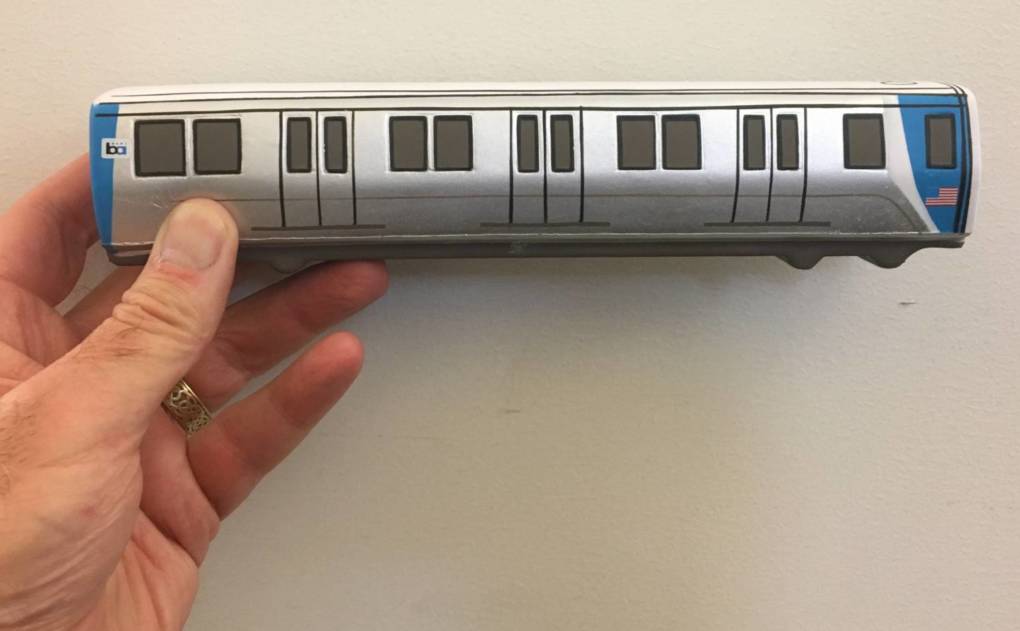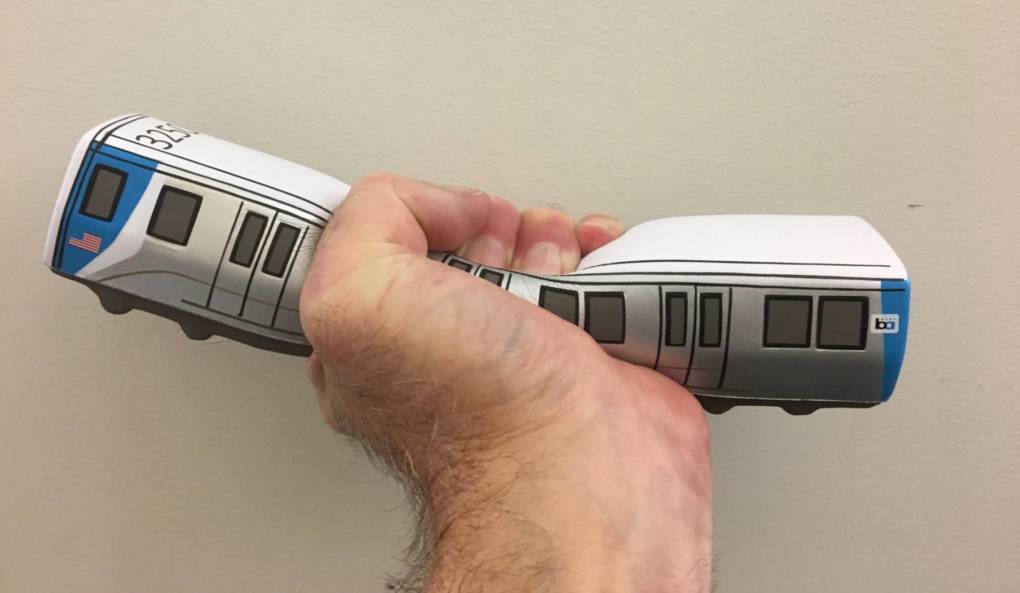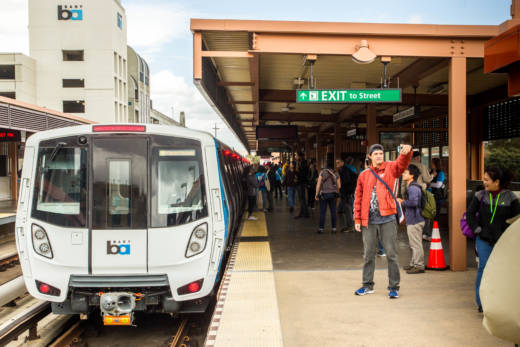A BART open house this weekend: The transit agency is showing off its new "Fleet of the Future" cars on Saturday at the Dublin/Pleasanton station and Sunday at El Cerrito del Norte.


A three-car train will be on the rails from 11 a.m. to 4 p.m. at each station. The first 200 visitors each day will get a "commemorative toy train" -- actually a foam train car. (See illustration.)
The cars feature a wide variety of improvement over BART's current fleet, which went into service between the 1970s and mid-1990s. Besides smelling brand new, enhancements include:
- Three platform doors, instead of the current two, to make it easier and faster for passengers to get on and off trains.
- Improved ceiling-level ventilation.
- Color-coded route signs visible to passengers on platform.
- Electronic route maps that show trains current position.
- Bike racks on some cars.
- Seats that have been raised a little to make it easier to stand from a sitting position. Side benefit: Carry-on-size suitcases will fit beneath the higher seats.
- Color-coded seats to designate space for riders with special needs.
For what it's worth, the new cars are configured with four fewer seats than the current models. Open-house visitors will have a chance to fill out a survey to tell BART what they think of the prototype vehicles.
Paul Oversier, BART's assistant general manager for operations, said at a Pleasant Hill open house earlier this month that the agency will start testing a 10-car prototype train on its main-line tracks by the end of the year. Passenger service on that train is slated to start sometime early in 2017. After that, BART expect to give the go-ahead to Canadian manufacturer Bombardier to begin full production of the new cars.
